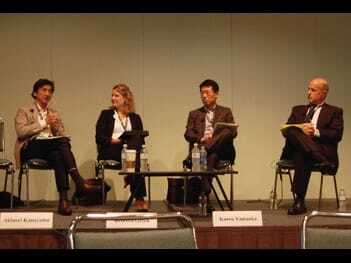A panel of experts at the ULI 2011 Fall Meeting in Los Angeles reported notable differences in the Japanese economy and way of life after the devastating earthquake and tsunami, including an increase in time spent at home, decreases in urban retail and restaurant activities, lower demand for oceanfront and high-rise properties, and greater emphasis on energy conservation and disaster resilience, with a likely long-term growth in renewable energy sources.
Nuclear power may have been a major victim of the disaster, since Japanese regulators have ordered the shutdown of all plants pending a rigorous inspection. Given the mood of the Japanese public, much of this energy is likely to be replaced in the short term with fossil fuels and, given current cost and availability, with renewables only in the longer term. Meanwhile, Japanese energy users are in a strict energy conservation mode.
Moderator Kevin Carroll, president and CEO of Tokyo-based EFA Laboratories, Ltd., asked the other panelists to give an account of the storm and its immediate aftermath. Kaoru Yamaoka, executive manager of Mitsui Fudosan, one of Japan’s largest developers, reported that disrupted communications was their most significant challenge, followed by disrupted transportation.
Rebecca Green, senior consultant for ERM Pacific, also based in Tokyo, reported that life is slowly returning to normal, but the effects were immediate in transportation and energy: people could not get to work, businesses went into conservation mode, and after 6 p.m., “it was a very dark city.” By summer, office workers endured 80-degree indoor temperatures. Managers had to meet a 25 percent reduction in electricity demand, which was later reduced to 15 percent.
Yamaoka reported that the real estate market changed immediately as well. Tenants “became very choosy” about disaster-preparedness features such as backup generators. Demand for residential high rises has fallen significantly because tenants do not relish the thought of walking up and down 40 or 50 floors in a power outage. Oceanfront properties also are in low demand due to the perceived danger from liquefaction in coastal landfill areas. In fact, the buildings themselves are relatively safe, but easily damaged utilities could leave residents without utilities for months.
Akinori Kanayama, senior manager of the business development division of PKK Tokyo Railways, also reported a dramatic change in lifestyle. Many Tokyo workers who stayed after work in the city’s restaurants and bars before the disaster began going home after work, and still continue to do so. Panelists agreed that this seems to have become a permanent change in lifestyle.
The panel was asked about the new picture for energy and sustainable development. Green reported that in the wake of the nuclear plant shutdowns, “we’re starting from scratch on how to supply energy for the country.” By next summer, they anticipate a 10 percent shortfall of energy, resulting in a 20 percent increase in prices. Since buildings represent two-thirds of peak demand, owners will have to step up to do more. Government is starting with incentives, but will soon shift to stricter standards.
Carroll noted that “green changes don’t come about because people like green changes”—building owners need to see savings. The cost of green power needs to come down as well. Japan pioneered renewable energy, including lower-cost solar panels, and these will come on line as costs become competitive—but this will take time.



